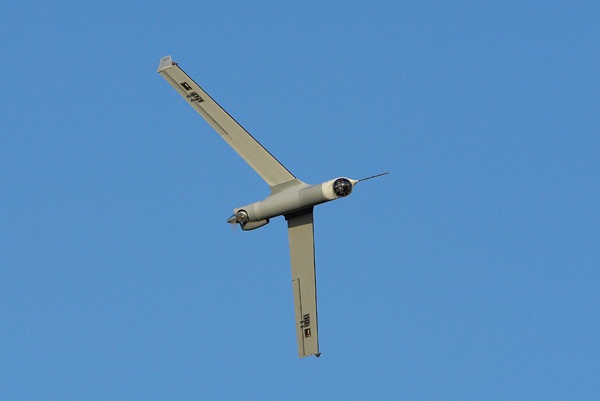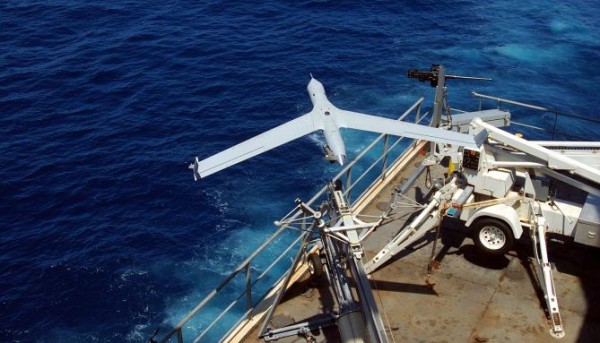Insitu, a wholly owned subsidiary of Boeing, announced this month that its ScanEagle unmanned aircraft completed a hydrogen-powered test flight for the first time.
A propulsion module made from a 1,500-watt fuel cell by United Technologies and a hydrogen fueling solution by the Naval Research Laboratory were integrated into the ScanEagle at Insitu’s facilities in Bingen, Wash. This ScanEagle is lighter than the traditional model, so operation costs are lower and there’s more room for equipment. the company said. And with hydrogen fuel, the aircraft left behind no harmful emissions during the two-and-a-half-hour test run.

The ScanEagle evolved from the SeaScan miniature robotic aircraft, which was debuted in 1998 by Insitu and designed to monitor schools of tuna and guide commercial fishers in the ocean around them. When Boeing and the U.S. military took an interest, the ScanEagle was created to provide intelligence, surveillance and reconnaissance data or communications relay. It has been used by the U.S. military in Iraq to collect important tactical information since 2004 and more recently by military organizations in several other countries including Australia, Canada, Italy and the Netherlands.
The ScanEagle functions autonomously but can be controlled from a remote computer station. If communications fail, the unmanned aircraft is programmed to return to a predetermined home base. Runway-independent, the 4-foot long ScanEagle with a 10-foot wingspan is launched by a pneumatic wedge catapult and retrieved by catching onto a rope hanging from a 50-foot pole in the “skyhook” system. The aircraft is capable of flying for about 15 consecutive hours (at least)—even in harsh weather conditions. It also includes high-speed wireless communications relay and stabilized electro-optical or infrared cameras. The ScanEagle has over 500,000 combat flight hours and continues to improve in design.
Insitu is teaming up with the Air Force Research Lab later this year to test a fuel cell in the Integrator, a newer, bigger version that can carry heavier payloads such as radio relay equipment to assist soldiers in the field. “Fuel cell technology has room for growth, and that will provide an opportunity for continued efficiency improvements and weight reduction,” said Jeff Knapp, Insitu’s Chief Engineer.

The U.S. Department of Defense (DOD) has invested heavily in alternative energy recently, with a specific interest in hydrogen fuel, as efforts grow to reduce dependence on foreign sources of energy. Fuel cells are becoming more efficient and less expensive to make and the technology continues to develop rapidly. The DOD anticipates using fuel cells for power distribution and for backup generators at defense facilities around the country. Plans to operate almost exclusively on hydrogen fuel are in progress.
In a statement regarding the DOD’s efforts, Morry Markowitz, executive director of the U.S. Fuel Cell and Hydrogen Energy Association, recognized that “the U.S. Department of Defense is demonstrating innovation and leadership by recommending the adoption of fuel cell technology for a variety of operational, cost and environmental reasons. Acquiring fuel cell systems will improve U.S. defense energy usage, protecting and creating jobs in the fuel cell industry.”
Interested in going solar? Check out our latest posts about current solar panel cost and the best solar panels and solar companies that you should consider. Learn more and get solar for your home today!